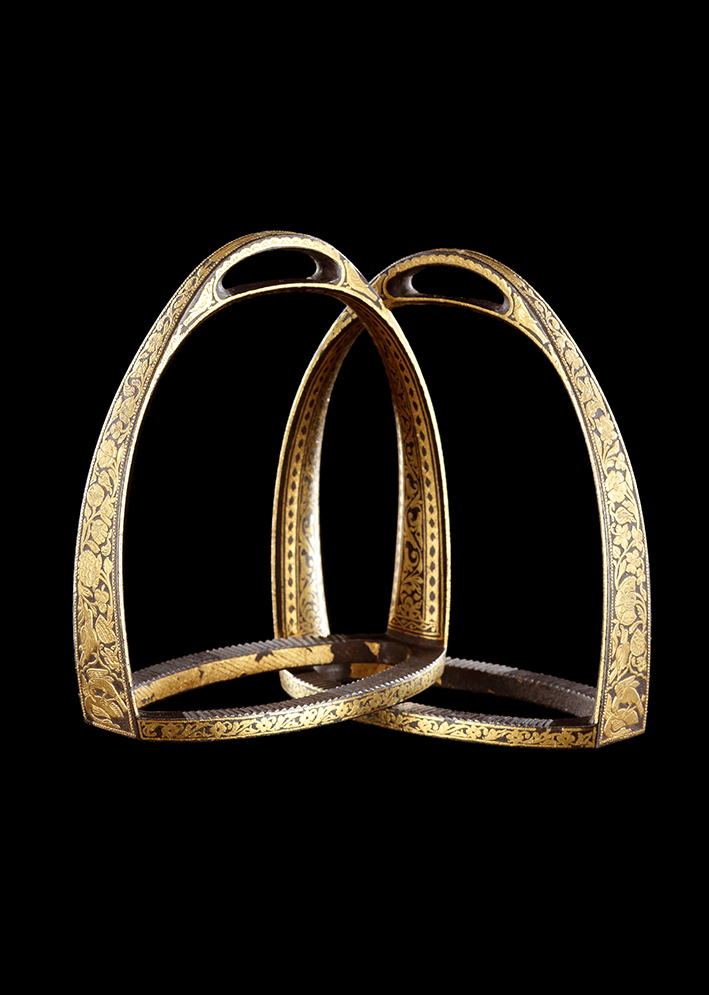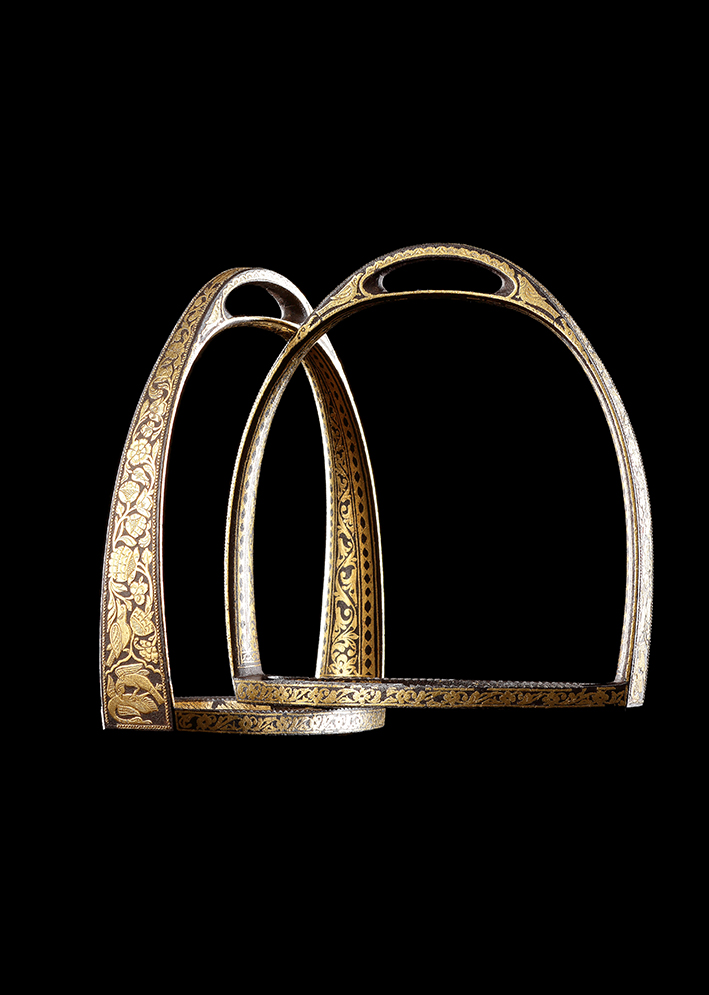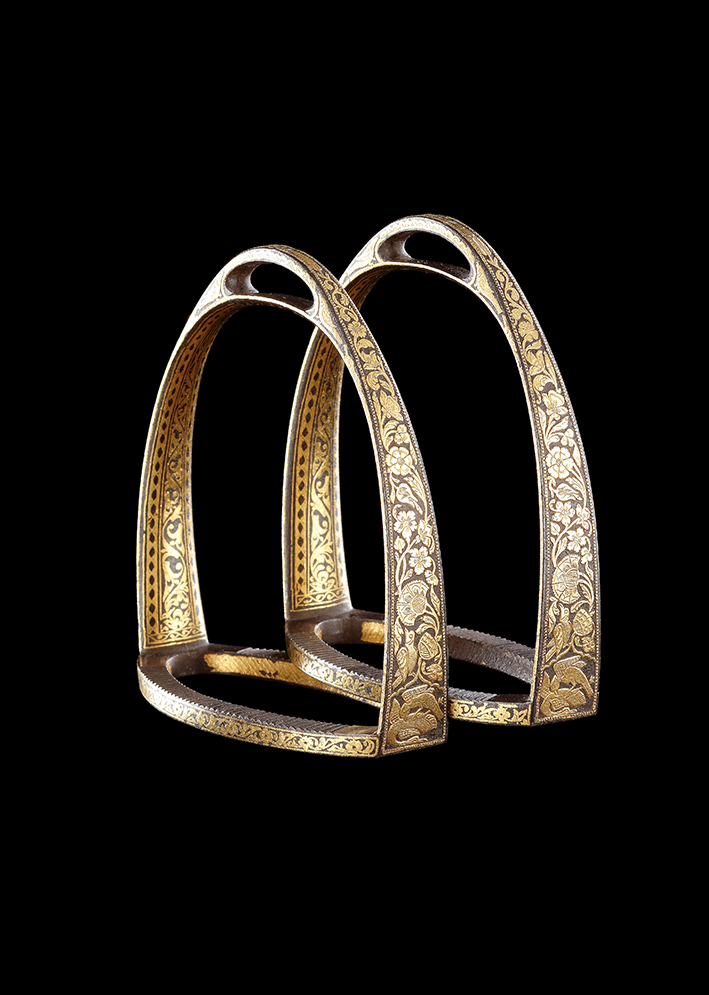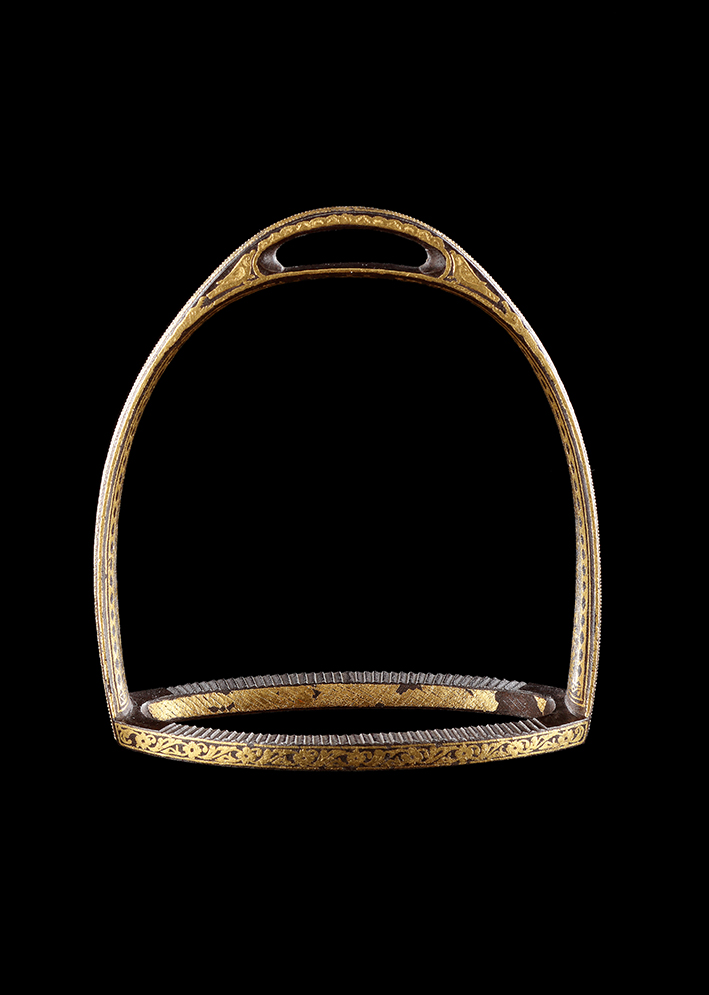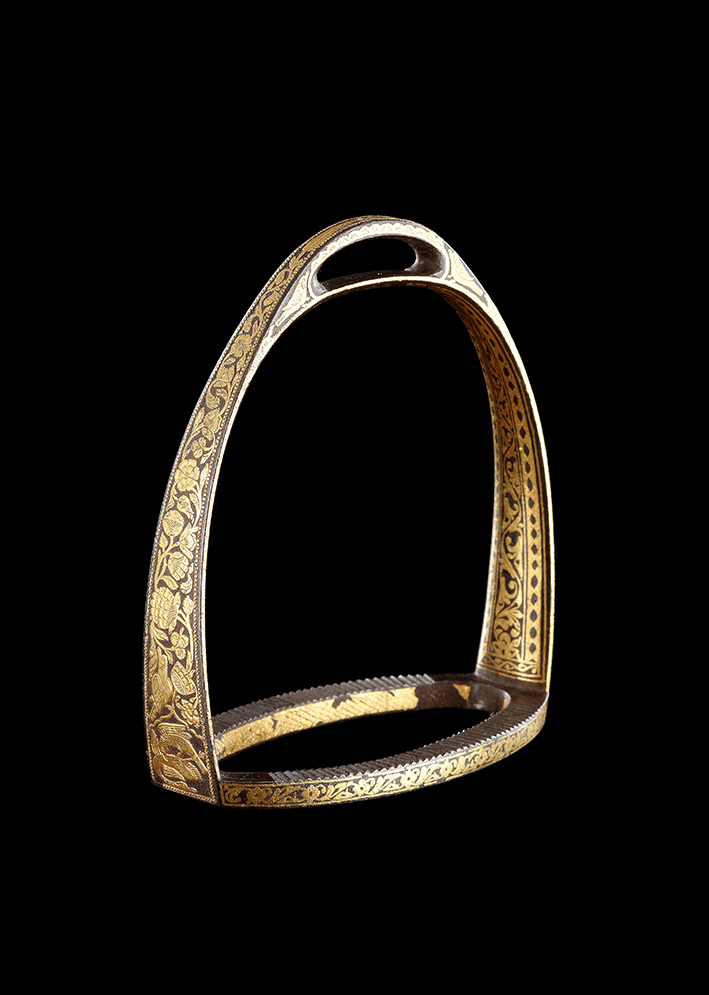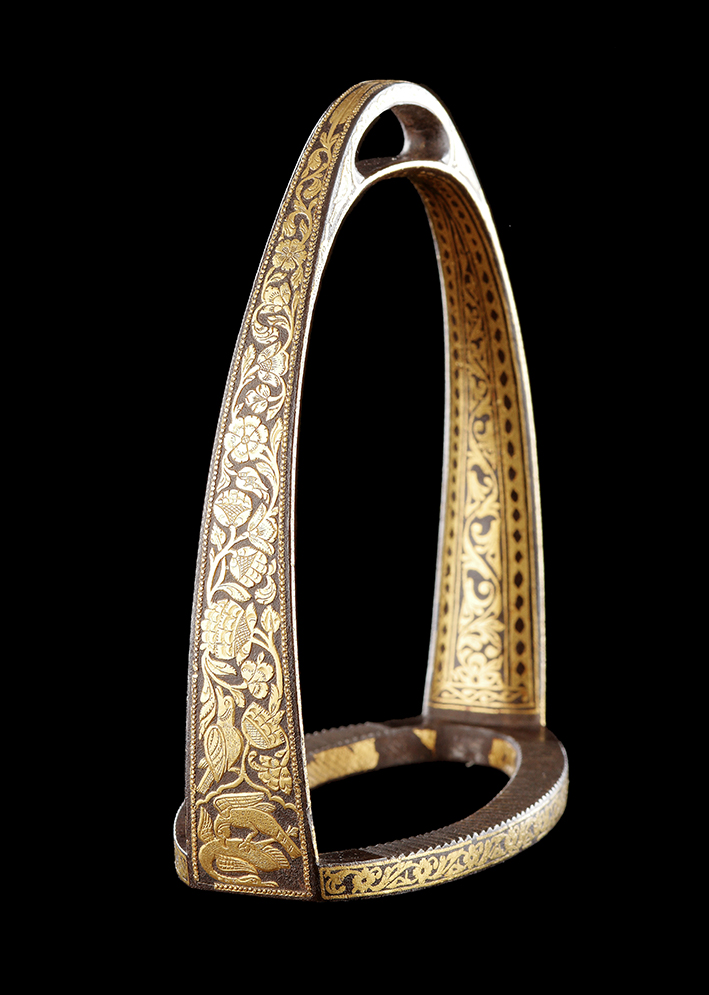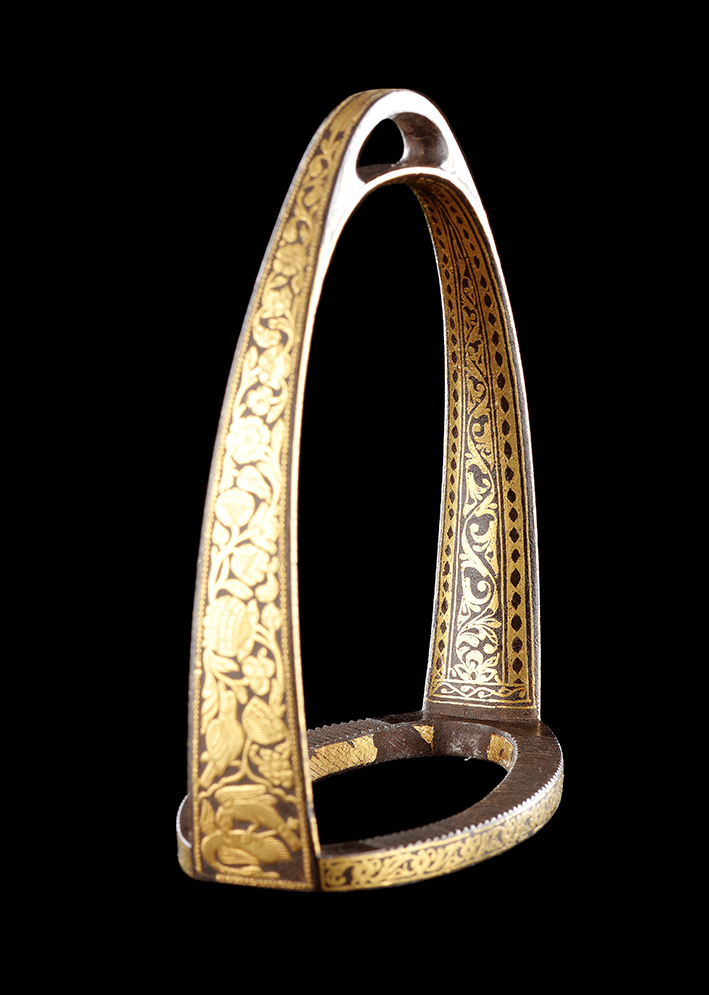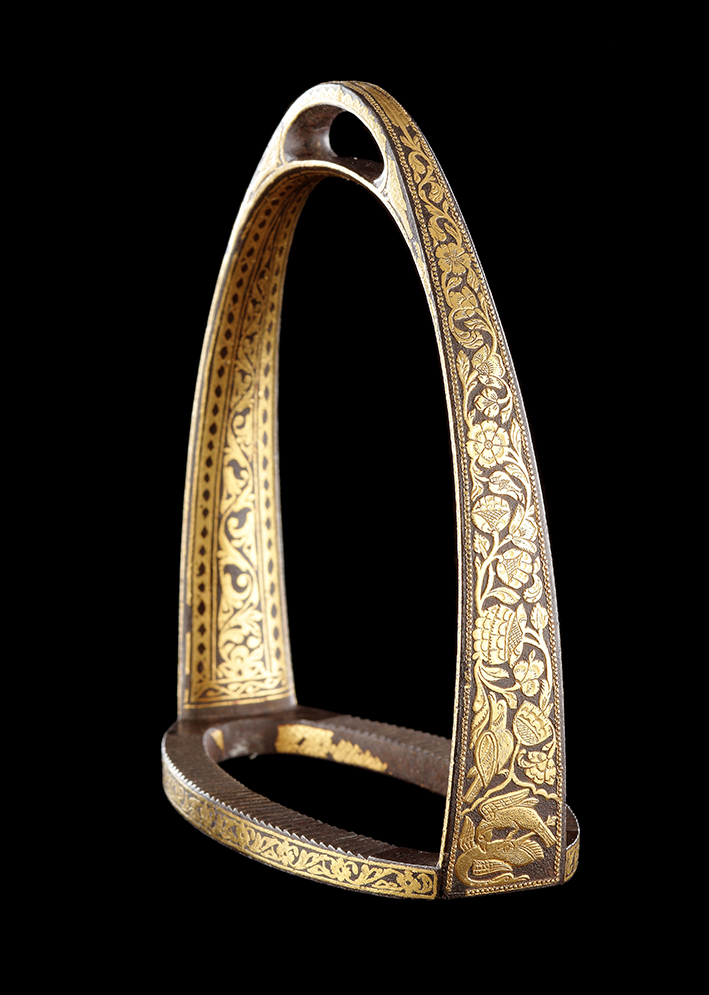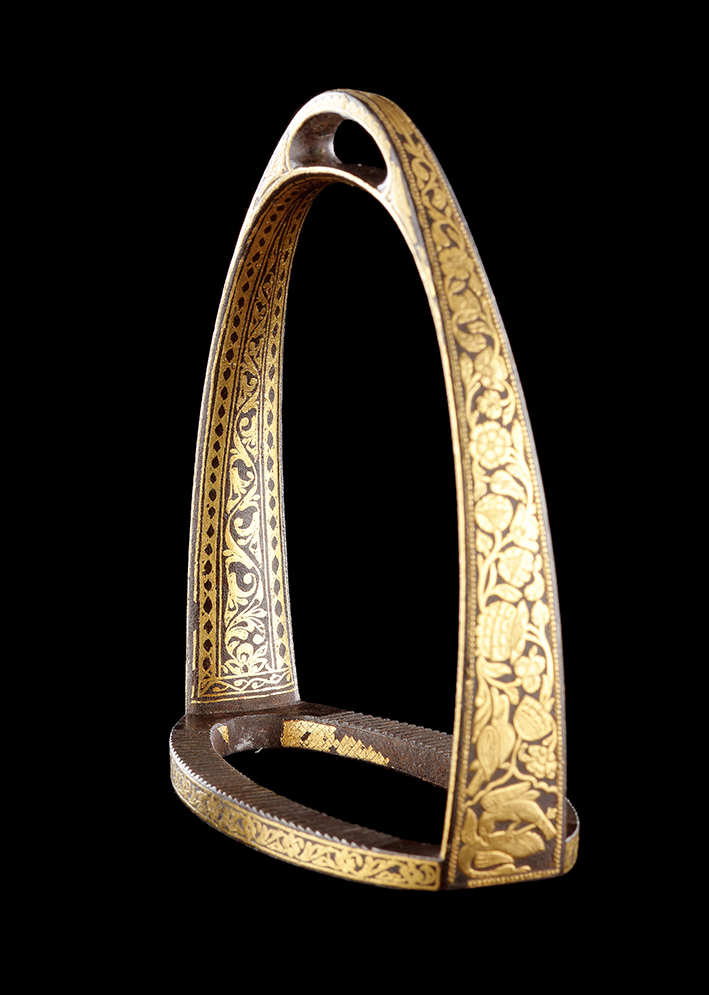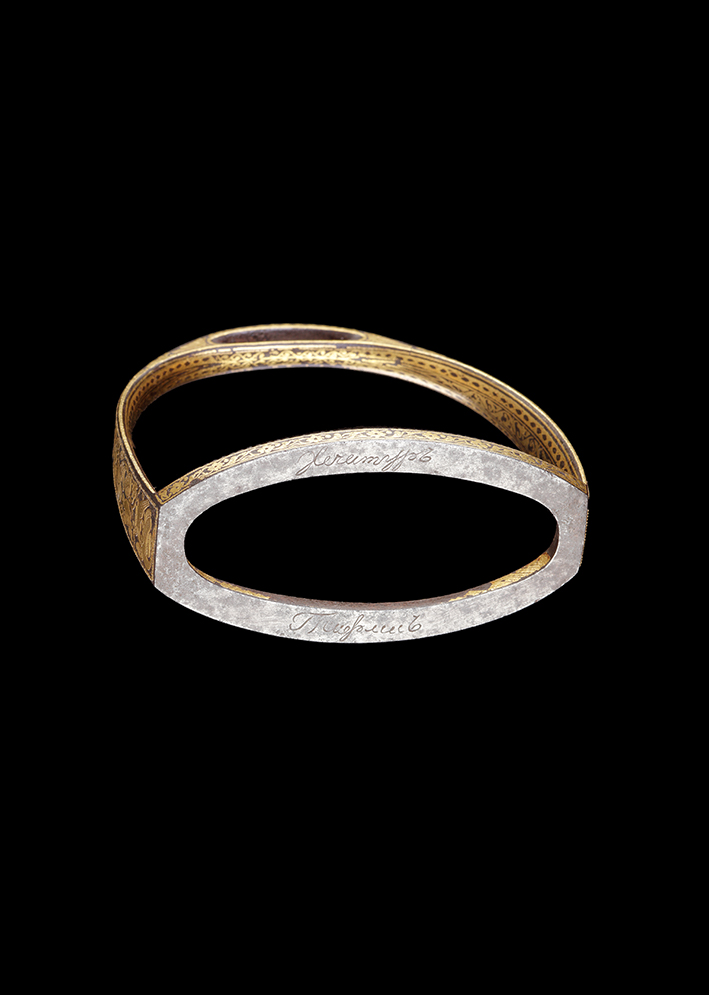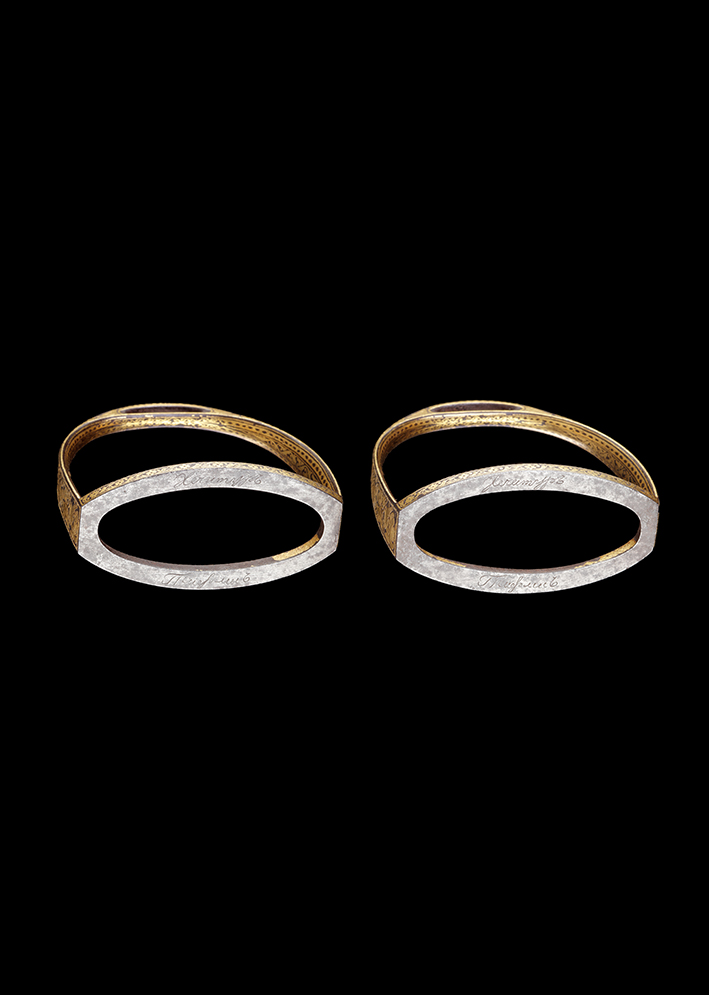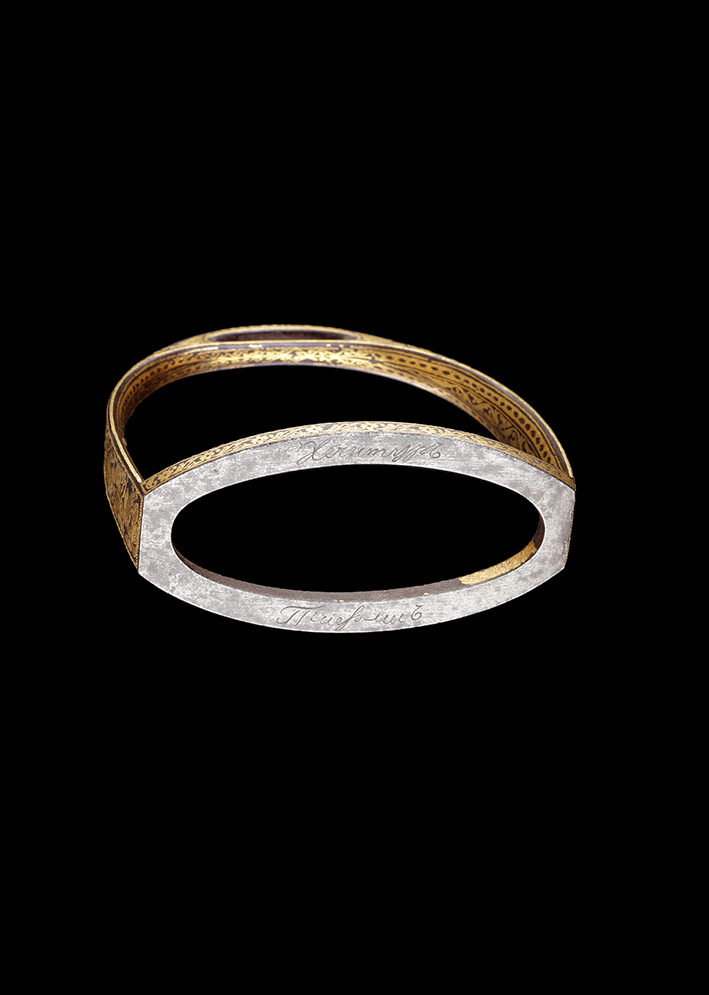Gold Stirrups
Tbilisi, Georgia
First half of the 19th Century
Overall Height: 135mm (5 1/3 inches)
Overall Width: 123mm (4 7/8 inches)
These refined stirrups originate from the city of Tiflis (or Tbilisi, the modern capital of Georgia). Miniature birds in gold – their striking features and plumage picked out in close detail – sit at either side of the sloping apertures through which the original stirrup leathers would have been placed. Further damascene-work appears over the arms, conveying a lush menagerie of gold flowerheads and curving vines. As the arms widen, these flowerheads grow, before at the base one bird defeats another within an ogee-arched panel.
The stirrups’ treads are hollow but formed with ridged upper edges so as to provide a firmer grip against the rider’s footwear. The decorative band of stylised flowerheads and vines over the exterior face, and a plain band of gold at the interior, reveal most clearly the cross-hatching used to hold the gold inlay. An inscription at the underside of the treads gives the maker’s name: “Khachatur (/Hatjatur) of Tbilisi”.
This name likely refers to Khechatur Beburov, a weaponsmith born in 1766 who worked in the city of Tbilisi, Georgia.[1] He produced arms and armour for Russian royalty, and was held in sufficiently high esteem that on the 2nd August, 1792, he was given the status of a noble by the Georgian Tsar Heraclius II.[2] Though the year of his death remains uncertain, we know that Khechatur was still alive and working in 1827, since this is the year in which he produced and presented a fine sword to Russian emperor Nicholas I (r.1825-1855), which is now preserved in the State Hermitage Museum in Saint Petersburg (Inventory Number B.O.-38).[3]
We thank Gotscha Lagidse for his assistance in identifying the maker of these stirrups.
[1] A detailed article on Khachatur’s biography can be found here: https://www.gotscha.nl/khachatur-ru.pdf (text in Russian).
[2] ibid, see Fig./Doc. 7 taken from the Central Historical Archives of Georgia.
[3] See Yurij A. Miller (2004), Caucasian Arms from the State Hermitage Museum, St Petersburg, p.61 and https://www.hermitagemuseum.org/wps/portal/hermitage/digital-collection/15.+weapons%2c+armor/507566.
